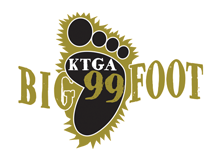Photo – An 1870 photo by William Henry Jackson of USGS of surveyors in Horse Creek area – Courtesy Lens of Time Northwest
The Horse Creek Skirmish occurred on November 13, 1854. Several warriors attacked a mail stage near present day Torrington. The attack was motivated by revenge.
But, first, let’s tell the tale of how the motivation for revenge came to be.
A Mormon pilgrim, on the Oregon Trail, claimed his cow was killed by an Indian. The cow had strayed and a visiting Sioux killed the cow.
Just east of Fort Laramie, in present day Goshen County, a small detachment of soldiers entered a large Sioux encampment to arrest a man who was accused of killing a migrant’s cow. Under normal circumstances, such matters, by treaty, were to be handled by the US Indian Agent.
Chief Conquering Bear tried negotiating with the military over the dispute. He offered a horse from his personal herd or a cow from the tribe’s herd as retribution. The owner of the cow demanded $25 cash. The Lakota’s had no money, they had livestock.
The cavalry demanded the Chief turnover the visiting tribal member, known as High Forehead. The Chief refused, saying High Forehead belonged to another tribe.
On August 19, 1854, Second Lieutenant John Lawrence Grattan, a recent graduate of West Point, was out to make a name for himself. Grattan led the detachment to the Sioux encampment to take High Forehead into custody. The West Point know-it-all unknowingly rode into his first and only encounter with a Sioux tribe.
By the time the detachment reached the encampment, the interpreter Lucien Auguste was intoxicated from drinking along the way, as he feared the encounter that lay ahead. Drinking heavily was a bad choice.
James Bordeaux, who owned a nearby trading post, had observed the encounter, later he recounted Auguste’s comments. As the soldiers were entering the Sioux encampment, the drunken Auguste taunted the Sioux, calling the warriors women and saying the Sioux were not there to talk, but to kill them all.
Historians estimate the encampment had some 1,200 warriors among the 4,800 total population.
Lieutenant Grattan rode to the lodge of High Forehead. He ordered the man to surrender. The proud Indian said he would die first.
Conquering Bear refused the Lieutenant’s commands to turn over High Forehead, he offered the trade for livestock. As Grattan pressed Conquering Bear, numerous Sioux warriors moved into flanking position around the soldiers. A nervous soldier fired his gun, shooting a Sioux. The warriors started shooting arrows and the fight was on.
Bad turned into ugly, when one of the soldiers fatally shot Chief Matno Wayuhi, otherwise known as Chief Conquering Bear. (In some reports, he was called Chief Brave Bear.) When the fighting was over, there were 29 soldiers killed. Chief Conquering Bear died nine days later near the Niobrara River.
The east coast reporters went crazy. They called this incident a massacre.
And on this date, November 13, 1854, Conquering Bear’s oldest surviving brother, Read Leaf; his half-brother, Long Chin; Spotted Tail; and two younger braves headed for the Overland Trail with vengeance on their minds.
About 12 miles west of Horse Creek, near present day Torrington, the braves waylaid a mail stage headed for Salt Lake City, Utah. They killed three men and robbed the coach of a metal box containing $20,000 in gold. The gold was never recovered.













